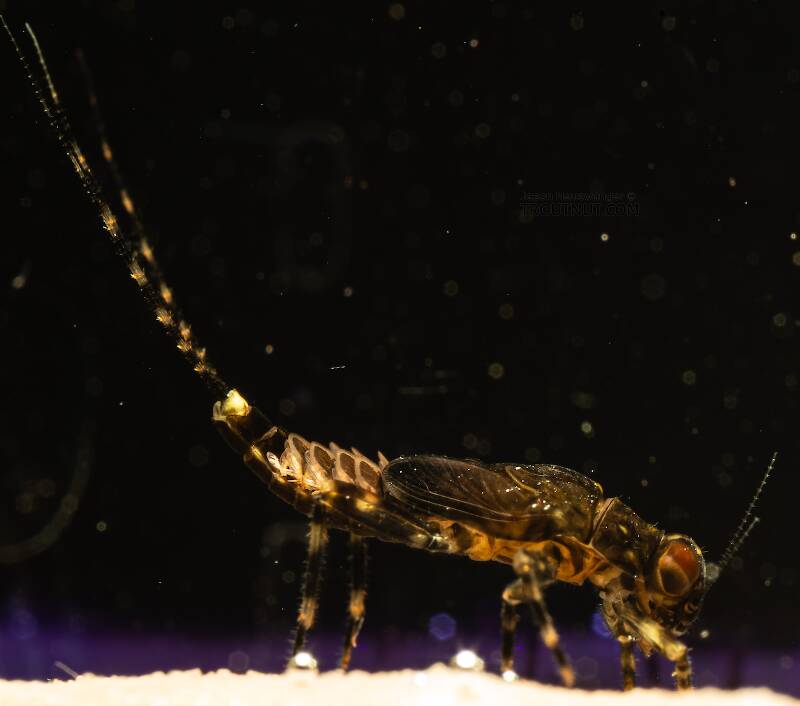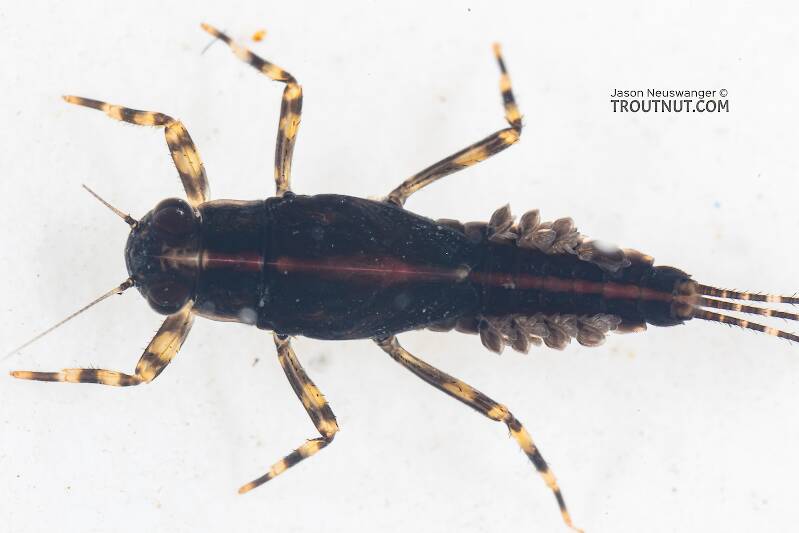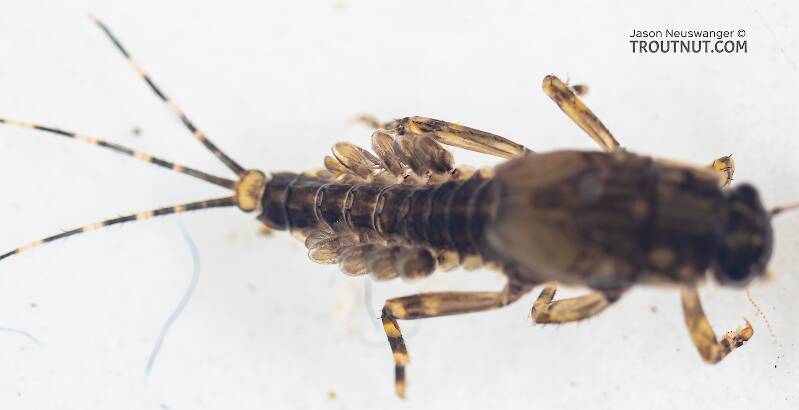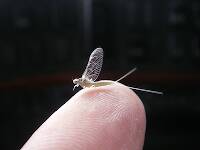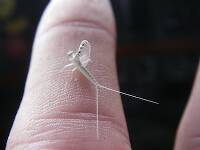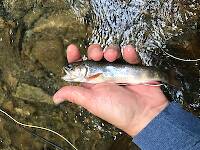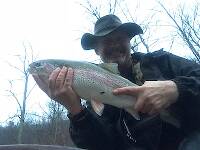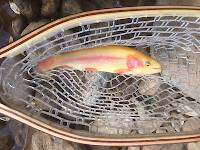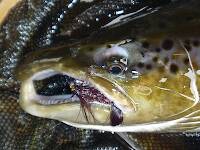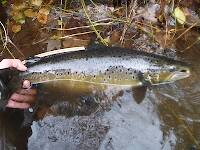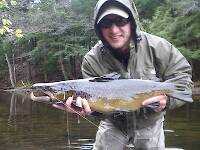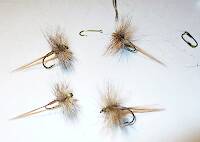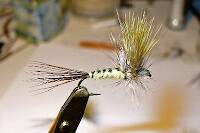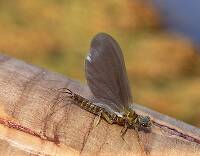
Blue-winged Olives
Baetis
Tiny Baetis mayflies are perhaps the most commonly encountered and imitated by anglers on all American trout streams due to their great abundance, widespread distribution, and trout-friendly emergence habits.
Featured on the forum

Troutnut is a project started in 2003 by salmonid ecologist Jason "Troutnut" Neuswanger to help anglers and
fly tyers unabashedly embrace the entomological side of the sport. Learn more about Troutnut or
support the project for an enhanced experience here.
This topic is about the Mayfly Genus Serratella
Prior to recent revisions, this genus of elegant little dark mayflies with their small dark bodies, dark slate wings, and paler legs and tails was more important to anglers. What was the East's most significant species is now known as Teloganopsis deficiens (Little Black Quill). The only remaining species reported of value to the eastern angler is Serratella serrata (Little Sooty Olive).These changes have had an even bigger impact in the West. The significant Summer hatching tibialis has been moved back to its old genus and is again called Ephemerella tibialis (Small Western Dark Hendrickson). The next most prominent species (though of only minor importance) is now called Matriella teresa and is the only recognized species of that genus in North America. The very minor species velmae has also been moved, and is now back in Ephemerella. This leaves only a few western species in this genus, and they are of no reported significance to anglers.
Example specimens
Martinlf on Jun 17, 2009June 17th, 2009, 5:23 pm EDT
Went over to the Dark Side the past two days. Thanks to all who helped. By the way, Jason, fished spinners also.
"He spread them a yard and a half. 'And every one that got away is this big.'"
--Fred Chappell
--Fred Chappell
JAD on Jun 21, 2009June 21st, 2009, 11:15 am EDT
Louis
That sounds larapin to me.:)
john
Spelled with a little J
That sounds larapin to me.:)
john
Spelled with a little J
They fasten red (crimson red) wool around a hook, and fix onto the wool two feathers which grow under a cock’s wattles, and which in colour are like wax.
Radcliffe's Fishing from the Earliest Times,
Troutnut on Jun 21, 2009June 21st, 2009, 9:14 pm EDT
No way! Louis electrofishing with his hands??
Edit: Ahh, I just noticed this was posted under Serratella. Now I get it!
Edit: Ahh, I just noticed this was posted under Serratella. Now I get it!
Jason Neuswanger, Ph.D.
Troutnut and salmonid ecologist
Troutnut and salmonid ecologist
Martinlf on Jun 22, 2009June 22nd, 2009, 4:19 am EDT
Yes, thanks to Taxon, Gonzo, JAD, and Konchu I am developing a functional knowledge of the bug and the ways fish respond to it. Results have been very satisfying. I'm even, as Gonzo can tell you, thinking of changing my avatar to Lou Streamwalker.
"He spread them a yard and a half. 'And every one that got away is this big.'"
--Fred Chappell
--Fred Chappell
Troutnut on Jun 22, 2009June 22nd, 2009, 8:02 am EDT
And what color 4wtsabre does Lou Streamwalker wield?
Jason Neuswanger, Ph.D.
Troutnut and salmonid ecologist
Troutnut and salmonid ecologist
JAD on Jun 22, 2009June 22nd, 2009, 12:39 pm EDT
Jason & Lloyd
From what I witnessed the other day, That Name should be
Louis Stream-swimmer. I thought old Newt was trying to get a fishes eye view of the underside of Teloganopsis.
jaD
From what I witnessed the other day, That Name should be
Louis Stream-swimmer. I thought old Newt was trying to get a fishes eye view of the underside of Teloganopsis.
jaD
They fasten red (crimson red) wool around a hook, and fix onto the wool two feathers which grow under a cock’s wattles, and which in colour are like wax.
Radcliffe's Fishing from the Earliest Times,
Martinlf on Jun 23, 2009June 23rd, 2009, 4:04 am EDT
Careful, John, people in glass houses shouldn't throw rocks at their neighbors. Nor should people with stinky freezers.
Anyway, I took my little dip in the evening, after Darth was in the trees preparing for transformation.
Jason, it's a maroon 5wtsabre. Those 4wt's are no match for the weapons of the empire.
Anyway, I took my little dip in the evening, after Darth was in the trees preparing for transformation.
Jason, it's a maroon 5wtsabre. Those 4wt's are no match for the weapons of the empire.
"He spread them a yard and a half. 'And every one that got away is this big.'"
--Fred Chappell
--Fred Chappell
Quick Reply
Related Discussions
Topic
Replies
Last Reply
4
Dec 3, 2011
by Troutnut
by Troutnut
10
Jul 27, 2008
by Phillyfired
by Phillyfired
4
Sep 14, 2007
by Mcjames
by Mcjames



